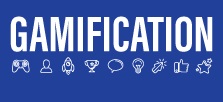
Written by Syed Shahfuddin bin Syed Zainal Abidin
Gamification is the process of adding game-like elements to something as to encourage partaking. In other words, gamification is about transforming something, which is hypothetically boring and uninteresting into a game for people to engage in.
Various professions use gamification to improve productivity or simply to increase active participation. Significant progress can be tracked and learning new stuff that has a steep learning curve can be made more fun when it is ‘gamified’. The engagement through apps and websites will help drive people’s participation, which develops long-lasting relationships for brands, encouraging people to meet personal challenges or even learn new tools or software.
In the context of advertising, gamification is a concept that has been adopted very effectively by well-known global brands such as Nike, Starbucks, McDonalds, Coke, Magnum, Samsung as well as countless others to build lasting relationships with their customers as well as serve as a means for continued communication. It also creates a somewhat addictive experience from the trill of achievement as well as the social gratification and a sense of accomplishment on the online/social media space.
Companies of all shapes and sizes have begun to use games to revolutionise the way they interact with customers and employees, becoming more competitive and more profitable as a result (Edery & Mollick, 2009). This means the future of personal communication for brands with their customers is now becoming a more participatory means of communication, going beyond the traditional, one way communication model.
Gamification can also be viewed as a means of self-expression and in today’s day and age where Generation Z is spending incredible amounts of time of social media platforms. Creating an environment whereby gamification becomes part of the metrics can add value to a brand’s image, especially since every brand wants to be on top of the mind of their intended target audience. Case and point would be the very recent explosion of Pokémon Go onto digital space, which very quickly became a global sensation, reiterating the fact that socially, gamification is changing the way we interact with people and the world around us.
In a nutshell, gamification is probably the start of a new beginning of possibilities in the way in which marketers and advertisers reach their intended audience. While the need for instant gratification is ever so evident in today’s fast paced digital world where a multiscreen presence has diluted our focus and attention span, gamification done creatively could serve as a means to help hold the attention span of target audiences of brands for perhaps a tad longer.
References
Chou, Y.-k. (2017, January 12). Yu-kai-Chou: Gamification & Behavioral Design. Retrieved from http://yukaichou.com/gamification-examples/top-10-marketing-gamification-cases-remember/
Edery, D., & Mollick, E. (2009). Changing The Game : How Video Games Are Transforming the Future of Business. Upper Saddle River, New Jersey: Pearson Education, Inc.
Fullerton, L. (2017, April 13). The Drum. Retrieved from http://www.thedrum.com/news/2017/04/13/study-teens-college-students-favor-snapchat-while-gen-z-spends-up-11-hours-day
Hall, M. (2014, May 13). The Innovative Instructor Blog. Retrieved from http://ii.library.jhu.edu/2014/05/13/what-is-gamification-and-why-use-it-in-teaching/
